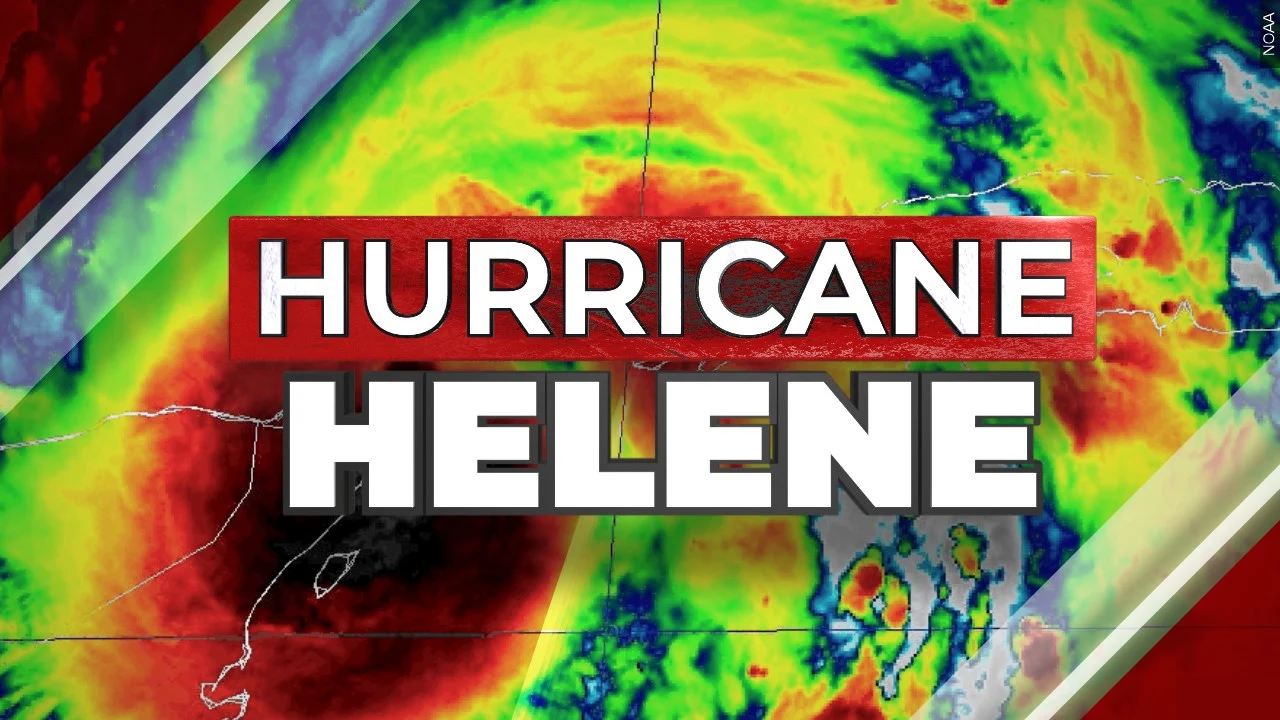Hurricane Helene Strengthens to Category 2
Hurricane Helene, a fast-moving storm, is barreling towards the Florida coast, intensifying to a Category 2 hurricane as it crosses the Gulf of Mexico. Forecasters are warning of an “unsurvivable” storm surge in northwestern parts of the state, along with damaging winds, heavy rains, and flash floods spreading hundreds of miles inland across the southeastern U.S.
**Impending Landfall and Emergency Declarations**
As Helene continues to gain strength, it is expected to reach major hurricane status, classified as Category 3 or higher, as it makes landfall on Florida’s northwestern coast. With hurricane warnings and flash flood warnings extending into south-central Georgia, the governors of Florida, Georgia, and the Carolinas have declared states of emergency in preparation for the storm’s impact.
The National Weather Service in Tallahassee is forecasting storm surges of up to 20 feet in Florida’s Apalachee Bay, warning that these could be particularly catastrophic and unsurvivable. In addition to the storm surge, high winds and heavy rains are also posing significant risks to the region.
**Preparations and Evacuations**
In anticipation of Helene’s arrival, residents in the path of the storm are taking precautions to ensure their safety. In Crawfordville, Christine Nazworth stocked up on essential supplies, despite Wakulla County issuing a mandatory evacuation order. She expressed her concerns, stating, “I’m prayed up. Lord have mercy on us. And everybody else that might be in its path.”
Multiple counties along Florida’s Gulf Coast have issued evacuation orders, with school districts and universities cancelling classes to ensure the safety of their students and staff. As Helene approaches, residents are urged to heed evacuation orders and take necessary precautions to protect themselves and their families.
**Potential Impact and Warnings**
Helene, currently located about 350 miles southwest of Tampa, is moving north northeast with top sustained winds of 90 mph. Forecasters expect the storm to intensify to a Category 3 or higher hurricane, with winds exceeding 110 mph, as it approaches land. While Helene is projected to weaken as it moves inland, its fast forward speed will allow strong, damaging winds to penetrate well inland across the southeastern United States.
The National Hurricane Center has issued tropical storm warnings as far north as North Carolina, cautioning residents about prolonged power outages, toppled trees, and dangerous flooding. Helene’s broad reach is expected to impact areas as far north as the southern Appalachian Mountains, with the potential for landslides and significant rainfall in Tennessee, Kentucky, and Indiana.
**Emergency Response and Preparedness**
Federal authorities have mobilized resources in anticipation of Helene’s impact, positioning generators, food, water, search-and-rescue teams, and power restoration crews to assist affected areas. The storm marks the eighth named storm of the Atlantic hurricane season, which began on June 1. The National Oceanic and Atmospheric Administration has predicted an above-average hurricane season due to record-warm ocean temperatures.
In addition to Helene, Tropical Storm Isaac has formed in the Atlantic and is expected to strengthen as it moves eastward. Isaac could become a hurricane by the end of the week, affecting areas such as Bermuda and potentially the Azores. Meanwhile, former Hurricane John has reformed as a tropical storm in the Pacific, threatening southwestern Mexico with hurricane conditions.
**Conclusion**
Hurricane Helene’s rapid intensification and projected impact on the Florida coast have prompted widespread preparations and evacuations in the region. As residents brace for the storm’s arrival, emergency response teams are mobilizing resources to assist those in need. With multiple states declaring emergencies and issuing evacuation orders, the focus remains on ensuring the safety and well-being of all those in Helene’s path.


